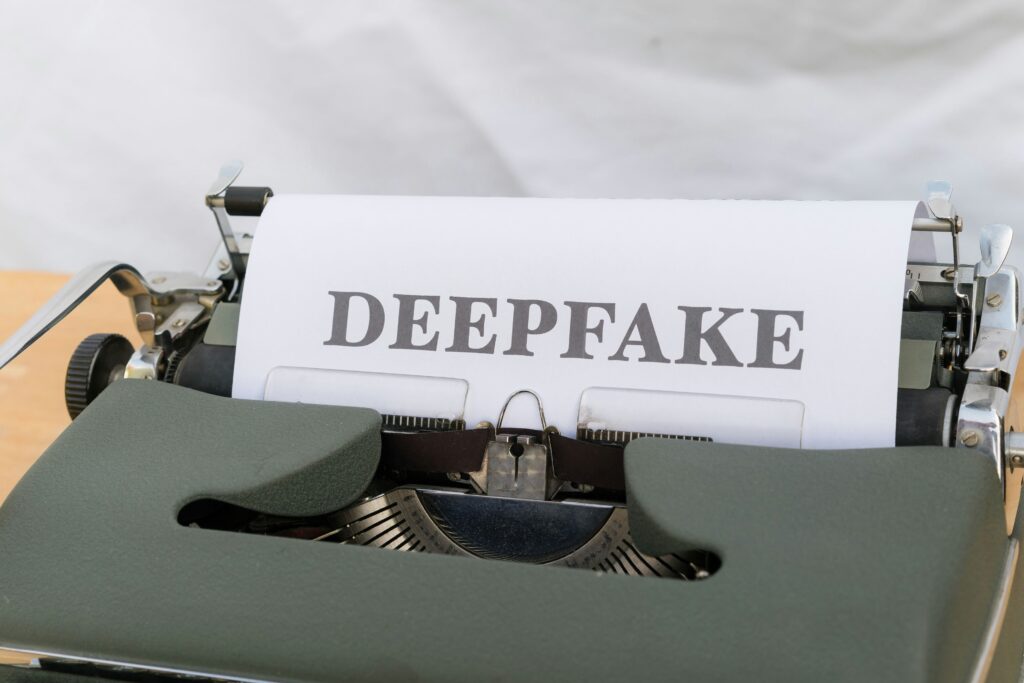In the digital age, the rise of deepfake technology has introduced a new frontier in disinformation, particularly concerning electoral processes. Deepfakes—synthetic media generated using artificial intelligence—can fabricate realistic images, audio, and videos of individuals saying or doing things they never did. As this technology becomes more accessible, its potential to disrupt democratic elections worldwide has become a pressing concern.Voice of America+2Public Citizen+2Brennan Center for Justice+2
Understanding Deepfakes and Their Electoral Impact
Deepfakes leverage machine learning algorithms to create hyper-realistic but entirely fabricated content. In the context of elections, such content can be weaponized to mislead voters, tarnish political reputations, and undermine public trust in democratic institutions.a28.asmdc.org
A notable example occurred during the 2024 U.S. presidential primaries, where a deepfake audio clip mimicking President Joe Biden’s voice was disseminated to discourage voter participation. This incident highlighted the ease with which malicious actors can exploit deepfake technology to influence electoral outcomes. Voice of America
Global Instances of Deepfake Disinformation
United States
In addition to the Biden incident, various deepfake videos and audio clips surfaced during the 2024 elections, aiming to misrepresent candidates’ statements and positions. While the overall impact was limited, these instances underscored the technology’s potential to sow confusion and distrust.
India
During the 2024 Indian general elections, political parties utilized deepfakes to resurrect deceased leaders for campaign endorsements. Videos featuring AI-generated representations of late politicians like Muthuvel Karunanidhi and Jayaram Jayalalithaa were circulated to garner support, raising ethical and legal questions. Wikipedia
France
In France, deepfake videos falsely depicting far-right leader Marine Le Pen’s family engaging in controversial activities went viral, amassing over two million views. Another deepfake video fabricated a news broadcast alleging an assassination plot against President Emmanuel Macron, further illustrating the technology’s capacity for political manipulation. Wikipedia+1Financial Times+1
Ghana
Ahead of Ghana’s 2024 general elections, a network of AI-generated social media accounts disseminated partisan content to influence public opinion. These accounts, likely powered by AI tools like ChatGPT, exemplify how deepfake technology can be employed for covert political campaigning. Wikipedia
The Challenges Posed by Deepfakes
Erosion of Public Trust
The proliferation of deepfakes threatens to erode public trust in media and democratic institutions. As distinguishing between authentic and fabricated content becomes increasingly difficult, citizens may become skeptical of legitimate information, leading to apathy or disengagement from the political process.
Amplification of Misinformation
Deepfakes can rapidly amplify misinformation, especially when disseminated through social media platforms. Their realistic nature makes them more likely to be believed and shared, exacerbating the spread of false narratives.
Challenges in Detection and Regulation
Detecting deepfakes remains a significant challenge. While technological solutions are in development, they often lag behind the evolving sophistication of deepfake generation methods. Furthermore, the lack of comprehensive legal frameworks complicates efforts to regulate and penalize the creation and distribution of malicious deepfakes.
Strategies to Combat Deepfake Disinformation
Technological Solutions
Advancements in AI are being harnessed to develop tools capable of detecting deepfakes. These include algorithms that analyze inconsistencies in facial movements, lighting, and audio-visual synchronization. However, the arms race between deepfake creators and detectors continues, necessitating ongoing research and development.Government Accountability Office
Legislative Measures
Governments worldwide are beginning to recognize the threat posed by deepfakes and are enacting legislation to address it. For instance, California’s AB 2839 aims to curb the spread of deepfake disinformation in political campaigns by imposing restrictions on AI-generated content in political advertisements. a28.asmdc.org
Public Awareness and Media Literacy
Educating the public about deepfakes and promoting media literacy are crucial steps in mitigating their impact. Encouraging critical evaluation of digital content and providing tools to verify authenticity can empower citizens to discern and reject disinformation.
Platform Accountability
Social media platforms play a pivotal role in the dissemination of deepfakes. Implementing robust content moderation policies, investing in detection technologies, and providing clear reporting mechanisms can help curb the spread of malicious deepfake content.
FAQs
Q1: What are deepfakes?
A: Deepfakes are synthetic media—such as videos, images, or audio—created using artificial intelligence to depict individuals saying or doing things they never did.Government Accountability Office+2Public Citizen+2Voice of America+2
Q2: How do deepfakes affect elections?
A: Deepfakes can mislead voters by presenting false information about candidates or political events, thereby influencing public opinion and potentially altering election outcomes.Public Citizen+1AP News+1
Q3: Can deepfakes be detected?
A: While detection technologies are improving, identifying deepfakes remains challenging due to their increasing sophistication. Ongoing research aims to enhance detection capabilities.
Q4: What legal measures exist against deepfakes?
A: Some jurisdictions have enacted laws targeting the malicious use of deepfakes, particularly in political contexts. However, comprehensive legal frameworks are still developing globally.
Q5: How can individuals protect themselves from deepfake disinformation?
A: Individuals can protect themselves by critically evaluating digital content, verifying information through trusted sources, and reporting suspected deepfakes to relevant platforms or authorities.
The emergence of deepfake technology presents a formidable challenge to the integrity of democratic elections. Addressing this issue requires a multifaceted approach, combining technological innovation, legislative action, public education, and platform accountability. By fostering a collaborative effort among stakeholders, societies can work towards safeguarding democratic processes against the disruptive potential of deepfake disinformation.
Note: This blog post is based on current research and reports on the impact of deepfakes in elections. For further reading, consider exploring the following resources:
- NPR: How AI deepfakes polluted elections in 2024
- Microsoft News: Don’t fall for deepfakes this election
- Brennan Center: Regulating AI Deepfakes and Synthetic Media in the Political Arena
- Public Citizen: Tracker: State Legislation on Deepfakes in Elections
- Carnegie Mellon University: Voters: Here’s how to spot AI “deepfakes” that spread election-related misinformation





